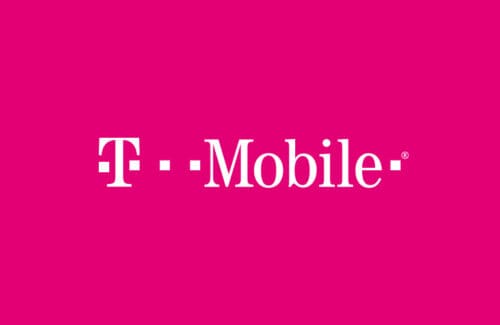Orlando, Fla. — Mar. 18, 2002
In his keynote speech to open the CTIA Wireless 2002 conference today, VoiceStream Wireless Corp. CEO John Stanton highlighted the company's vision for providing wireless data access via an integrated GPRS/EDGE/802.11b service offering. Speaking in front of thousands at the wireless industry's annual event, Stanton said VoiceStream and T-Mobile are best positioned to deliver on the promise of wireless data access. By combining the benefits of its existing GPRS and 802.11 networks, VoiceStream will give customers what they want most from wireless data services: ubiquitous coverage and high speed. As early as next year, VoiceStream and T-Mobile will allow customers to have seamless service between the two networks as part of their GET MORE promise to provide customers with the best value in their wireless service.
VoiceStream launched its high-speed GPRS (General Packet Radio Service) data network across its entire footprint late last year. An extension of the company's GSM (Global System for Mobile Communications) network, GPRS allows average access speeds of 40 KBps in 6,500 cities across the country. The company will begin deploying EDGE upgrades later this year and through 2003, expanding the breadth and depth of the core area network. In January, VoiceStream acquired the assets of MobileStar Network Corp. and now provides 802.11b wireless broadband service in 650 hot spots across the country in public locations such as select Starbuck Corp.'s coffeehouses, airports, hotels and convention centers under the name T-Mobile Wireless Broadband.
Stanton explained the customer benefits of combining the two networks in terms of the types of data applications customers need to access when they are either highly mobile or semimobile. The existing GPRS and upcoming EDGE networks provide wide area coverage for applications customers want constant access to such as e-mail and calendar, whereas 802.11 networks need to be available in convenient locations where customers are likely to spend time accessing larger data files.
"By combining 802.11 and our existing GPRS service, customers will have access to the right technology at the right time," Stanton said. "Whether they need to have constant e-mail access on the go or predictable access to large files on demand, VoiceStream will be able to meet customer needs with coverage where they want it and speed when they need it."
More than 19 million mobile and remote workers will regularly use public, wireless local area networks (WLANs) by 2006, according to projections from the Gartner Dataquest research firm. Starbucks Corp. has embraced wireless broadband access service as a new service that is meant to enhance its customers' experience. Currently, T-Mobile Wireless Broadband service is available at Starbucks locations in Austin, Texas; Dallas; Houston; New York; San Francisco; and Seattle. The companies plan to expand the service to more than 70 percent of all Starbucks company-operated locations in North America over the next few years.
"The proliferation of mobile devices and a 'road warrior' business climate are driving a huge market demand for wireless broadband solutions," Stanton said. "As a national carrier, VoiceStream can utilize its scalable infrastructure such as billing and customer care to offer a seamless experience at a cost-effective price."
Stanton said there are cost benefits to be realized by customers who use a combination of both networks to meet their wireless data access needs because of the difference in pricing structures. GPRS delivers wide area coverage at speeds comparable to standard dial-up connections and charges customers based on the amount of data transferred, making it the practical solution for delivering e-mail, alerts and other low-bandwidth transfers. 802.11 delivers broadband speeds in hot spot locations and is priced on either a pay-as-you-go or a fixed-fee basis for unlimited local or nationwide usage, making it more convenient and economical to access large data files. "By providing a seamless transfer across technologies for customers with one bill, one provider, VoiceStream will further deliver on our GET MORE promise to offer customers the best value in their wireless service," Stanton said.
As early as next year, VoiceStream will offer a combination GPRS and 802.11 PC Data Card and other handheld devices, giving customers seamless service between the two networks. VoiceStream already supports a broad range of integrated voice and data devices including handsets, Palm and Windows-based personal digital assistants, and PC Data cards. Most recently, VoiceStream announced the availability of the RIM Blackberry 5810™ wireless handheld e-mail solutions with Integrated Phone and just today at CTIA announced plans to introduce a new Microsoft Pocket PC Phone Edition in the coming months.
Lindsay Morio
T-Mobile USA Media Relations
425-383-4002
About T-Mobile USA, Inc.
Based in Bellevue, Wash., T-Mobile USA, Inc. is the U.S. wireless operation of Deutsche Telekom AG. By the end of the first quarter of 2010, approximately 150 million mobile customers were served by the mobile communication segments of the Deutsche Telekom group - 33.7 million by T-Mobile USA - all via a common technology platform based on GSM and UMTS, the world's most widely used digital wireless standards. T-Mobile USA's innovative wireless products and services help empower people to connect to those who matter most. Multiple independent research studies continue to rank T-Mobile among the highest in numerous regions throughout the U.S. in wireless customer care and call quality. For more information, please visit http://www.T-Mobile.com. T-Mobile is a federally registered trademark of Deutsche Telekom AG.





